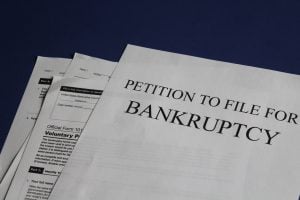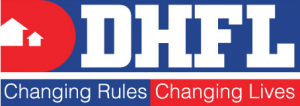List of Biggest Bankruptcies in India: Bankruptcies although a regular occurrence in the global business world is considered a taboo topic in India. Promoters would rather hide the fact that a company is going bankrupt and would instead create a facade of success. Understanding this government was forced to introduce the Insolvency & Bankruptcy Code.

This reform undertaken by the Modi government would allow creditors/lenders of a business can approach the National Company Law Tribunal (NCLT) when they have given up on receiving any of the loan amounts from the company. They would then be able to recover some amount through the sale of the company or its assets through bids to others.
Table of Contents
8 Biggest Bankruptcies in India
1. Dewan Housing Finance Ltd. – US$13.93 billion

Dewan Housing Finance Ltd. (DHFL) is a non-banking financial company that was established in the year 1984 by Rajesh Kumar Wadhawan. The company was set up in order to assist the lower and middle-income groups to avail housing finance in India’s tier 2 and tier 3 cities. DHFL was the 2nd housing finance company to be set up after HDFC.
The company performed well for over 3 decades maintaining good growth and even acquiring companies like Deutsche Postbank Home Finance. The company also took on slum development and slum rehabilitation projects in Maharashtra.
These projects and several others were financed through debt raised by the company. This orchestrated development of DHFL was however cut short after Cobrapost, a group of journalists published an expose on DHFL on 29 January 2019.
According to the expose DHFL had diverted the Rs. 31,000 crores from the loans they had taken to various shell companies for the personal gains of its promoters which included Kapil Wadhawan, Aruna Wadhawan, and Dheeraj Wadhawan.
Cobrapost also alleged that DHFL had made crores worth of donations to political parties possibly to keep them shielded. For eg. Rs. 14,282 crores worth of loans were diverted to these shell companies under slum development rehabilitation.
In addition, the Bharatiya Janta Party too received donations worth Rs. 20 crores. What earlier seemed like a well-orchestrated growth of DHFL now seemed like a well-orchestrated scam.
DHFL Responds
Initially, the company denied these claims and Indian credit rating agencies reaffirmed their high safety rating for DHFL. However, the actions of the company spoke otherwise. They began selling a number of businesses to pay their debt. Later in 2019, DHFL defaulted in its bond payments and Rs 900 crore worth of interest payments. This forced the credit rating agencies to act. By now the stock price fell by over 97%.
Due to their defaults, the RBI was forced to supersede the board of DHFL and began processing a resolution for DHFL under the Insolvency and Bankruptcy Code. DHFL would soon also be taken to NCLT. Investigations taking place in the background revealed further disturbing news.
Investigations following the trail of money had tracked it to Sunblink real estate in 2010. This led them to gangster Iqbal Mirchi an accomplice of Dawood Ibrahim. By December 2019 DHFL was stuck in bankruptcy courts for defaulting on Rs 90,000 crores of debt, and their promoters were jailed on money laundering charges. Meanwhile, the RBI had approved the DHFL takeover by the Piramal Group.
2. Bhushan Power and Steel – US$6.9 billion

Bhushan Power & Steel Ltd. (BPSL) was founded in 1970 and went on to become one of the top steel manufacturing companies in the country. Between 2007 and 2014 the company met most of its expansion needs through loans. These loans were used for meeting working capital requirements, purchase of plant and machinery, and other expansion-related activities. This caused the company to raise over Rs. 47,204 crores from 33 banks and other institutions.
Despite this, the company maintained good growth and reasonable profits. This would have meant that at least the loans were being put to good use. BPSL however kept continuously missing payment deadlines.
In April 2019 the CBI began investigating the company and it was later revealed that the money was diverted to 200 shell companies. This caused the banks to suffer from huge NPA’s forcing the company into National Company Law Tribunal (NCLT). BPSL was eventually auctioned off to JSW Steel who offered an Rs. 19,700 crore repayment proposal. This meant that banks lost out on 60% of their loan amount.
3. Essar Steel (US$6.9 billion) – Biggest Bankruptcies in India

Essar Steel was part of the Essar group which was set up in 1969 and is owned by the Ruia family. The company first fell into the debt trap in 2002 where it underwent Corporate Debt Restructuring for a debt of Rs. 2,800 crore. Luckily for Essar, the company survived and was back on track by 2006.
Essar once again took on its ambitious growth plans. Sadly these plans were hampered due to delays in environmental approvals and the non-availability of natural gas. By 2015 Essar was once again caught in a debt trap, but this time amounting to Rs 42,000 crore. The plans to rescue the company were met with plummeting commodity prices.
In June 2017, Essar was named among the list of 12 stressed accounts submitted by RBI that would have to undergo insolvency action under the IBC. Following this, the company was put under the National Company Law Tribunal (NCLT). Essar Steel was put up for auction and later acquired jointly by Arcelor Mittal and Japan’s Nippon Steel. The company was renamed ArcelorMittal Nippon Steel India (AM/NS India).
4. Lanco Infra – US$ 6.3 billion

Lanco Infra was founded in 1986 by Lagadapati Amarappa Naidu and his nephew Lagadapati Rajagopal who also was a member of the Lok Sabha. The Company’s growth in its initial year was unmatched as it received several large contracts primarily in construction.
Soon the company also entered other areas like power generation, transportation, solar energy, coal mining, etc. By 2010 Lanco was among the fastest-growing in the world. It was also India’s first Independent Power Producer and also its largest private power provider.
Following the several policy reversals put in place in 2012 by the UPA government which were otherwise encouraged by them affected Lanco’s business drastically. According to India Energy Exchange, the monthly average merchant power tariffs in January 2012 were at around ₹ 3 per unit, down from a high of ₹ 10.78 per unit in April 2009.
Lanco’s revenue soon reduced which also made it difficult for the company to raise debt from banks. Due to its poor financials by March 2017, 60% of its expenses were interest payments.
In June 2017 Lanco Infra was named among the list of 12 stressed accounts submitted by RBI that would have to undergo insolvency action under the IBC. Once the largest infrastructure company in India Lanco now faced insolvency proceedings by the NCLT.
5. Bhushan Steel (US$6.2 billion) – Biggest Bankruptcies in India

Bhushan Steel was founded in 1987 when Brij Bhushan Singal and his sons bought a steel factory in Sahibabad. The family quickly grew the business by including sophisticated Japanese machinery in their operations to manufacture steel.
What further accelerated their growth was the budding Indian automobile industry which began to take form in the country. This aided Bhushan Steel’s growth and allowed them to acquire clients like Maruti Suzuki, Mahindra and Mahindra, and Tata Motors. Its Client base further allowed Bhushan Steel to acquire loans that it used for its expansion needs.
However, the dream run took a turn for the worst post the 2008 financial crisis when Bhushan Steel the commodity prices began to fall. Bhushan Steel already had been burdened by debt exceeding Rs. 11,000 crores.
By 2012 the price of steel had fallen to $300 from their heights of $1265 in 2008. This affected the steel industry as a whole but the companies were still able to avail loans as both the banks and Bhushan were optimistic that the prices would soon pick up.
Banks had extended almost Rs. 18,000 crores in fresh loans on this bet. But the good times never came. Although the company kept growing, it could not keep up with the debt as it was ₹31,839 crores, 3.5 times its equity. The company soon fell short of its debt repayment obligations.
Bhushan Steel too was named among the 12 stressed accounts list submitted by RBI that would have to undergo insolvency action under the IBC. In 2019 the company was merged with Tata Steel and is today known as Tata Steel BSL Limited.
6. Reliance Communications – US$4.6 billion

Reliance Communications (RCom) is today known to be Anil Ambani’s biggest failure. But Rcom once used to be one of the fiercest competitors. Anil Ambani had received RCom following the split of assets between the Ambani brothers after the death of their father.
One of the first mistakes that the company made was opting for CDMA early on over the other alternative i.e. GSM. This was a bad bet as GSM technology developed leaving CDMA behind.
Anil Ambani however was quick to realise this and began investing in the 3G and GSM technology. This was followed by an aggressive pricing strategy where he offered services often 60% cheaper than other telecom companies. This worked in his favor as RCom was India’s 2nd largest telecom provider in 2008. But by now RCom had already shelled out Rs 8,500 crore to buy 3G spectrum in over 13 circles. Trouble began brewing for RCom as it was caught amidst the 2G scam storm.
The 2G scam had enabled almost 14 players in the industry which further skimmed profit margins. RCom slowly began losing its market share and stood 4th in the telecom sector by 2014.
The final nail in Rcom’s coffin was the entry of Jio in Indian markets which also began providing free data services. By 2017 Rcom’s debt had ballooned to Rs 43,000 crore from Rs 25,000 crore in 2010. Estimates have shown that nearly half of the company’s debt was for buying spectrum. RCom stopped its operations in 2017 and began selling its assets to pay off its debt. The company was then sent to NCLT and Anil Ambani still faces trial over its dues.
7. Alok Industries – US$4.1 billion

Founded in 1986, Alok Industries was one of India’s leading textile manufacturers of world-class garments. The company maintained good growth and profitability.
One of the first mistakes by Alok Industries was borrowing Rs. 10,000 crores for their expansion needs in 2004. The worst part was that Alok chose to use this to open new plants instead of enhancing or using their existing plant to full capacity. What Alok didn’t watch out for was the possibility of a fall in demand in the industry. These factors saw Alok’s asset turnover worsen in addition to low demand they also fell prey to cut-throat competition.
Another one of Alok’s mistakes was entering the real estate market in 2007. It acquired properties in Lower Parel, Mumbai. The real estate market was adversely affected by post the 2008 financial crisis.
Consistent losses and increasing debt further worsened Alok’s position. In June 2017 Lanco Infra was named among the list of 12 stressed accounts submitted by RBI that would have to undergo insolvency action under the IBC. Alok Industries had Rs.30,000 crores worth of dues to be paid to its creditors. Reliance and JM Financial Asset Reconstruction Company won the bid for the company with a plan of Rs. 5000 crores.
8. Jet Airways – US$2 billion

Jet Airways was the country’s largest and longest-serving private airline. Founded in 1992, the airline was the first to fly a fleet of Boeing 737-400 aircraft. At its peak, it even carried out 650 flights a day. When Jet failed many wondered if it was even possible for any airline to operate profitably in the Indian market. This was because Jet had followed Kingfisher’s failure. Jet too was prey to the airline industry.
One of the major reasons for the Jets failure was the huge fuel expenses to be borne by the airline. Generally, 40% of the airline’s expenses are fuel. When aviation fuel gets expensive this is not always carried forward to the customers. This is because no player holds enough market share to influence the price. This in turn reduces the airlines’ profit margin due to competition.
In addition to this Jet suffered from the depreciating rupee. This affects international airlines as they have to now pay more in dollars to other countries for rent, maintenance fees, and refueling costs to international airports. The Rupee was also known as Asia’s worst-performing currency.
These factors eventually led to the Jet’s failure.
In Closing
It makes it hard to believe at first that such huge bankruptcies have taken place. But looking back they also offer valuable lessons for businesses. A common theme occurring through all of them has been the ‘Debt’. If used correctly it may aid the growth of the business or face the same fate as the companies above.
That’s all for these biggest bankruptcies in India post, let us know in the comments what you think about the IBC and companies going bankrupt. Happy Holi!
Stay updated on the latest Stock Market News and Corporate Actions NSE with Trade Brains Portal, while also keeping an eye on the Top Gainers Today in NSE with our Stock Heatmap feature.

Aron, Bachelors in Commerce from Mangalore University, entered the world of Equity research to explore his interests in financial markets. Outside of work, you can catch him binging on a show, supporting RCB, and dreaming of visiting Kasol soon. He also believes that eating kid’s ice-cream is the best way to teach them taxes.






